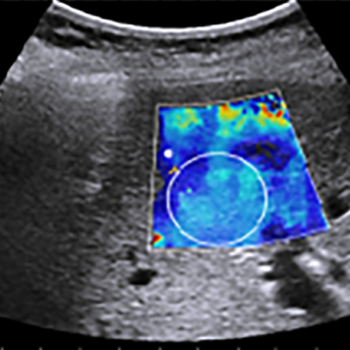SWE-Assist: Method for objective, noninvasive staging of diffuse liver disease from ultrasound shear-wave elastography

Liver diseases, especially chronic ones, often pose significant challenges in their diagnosis due to their subtle, elusive symptoms and disease progressions. Noninvasive diagnostic methods are preferred due to lower risk and patient convenience, but the accuracy and comprehensiveness of these methods have historically been suboptimal. Ultrasound shear-wave elastography (SWE) has shown potential as a noninvasive method to diagnose liver disease but has room for improvement. Existing methods of utilizing SWE often suffer from limitations, such as a narrow scope of data integration, potential inconsistency, and inefficiency in pattern detection. Solely relying on stiffness-based liver fibrosis staging can overlook vital aspects of liver conditions that could otherwise be detected. These challenges highlighted the need for a comprehensive, integrated solution that can maximize the utility of SWE alongside other data.
Technology Description
This technology encompasses systems and methods for the objective, noninvasive staging of diffuse liver disease and other diseases through the utilization of ultrasound shear-wave elastography (SWE). It provides a liver fibrosis staging SWE image analysis algorithm or toolkit that assimilates demographic, clinical, laboratory, conventional sonographic, and SWE data, enhancing the detection capability of liver disease. Advanced image processing methods are employed to extract fibrosis pattern information from SWE and ultrasound image data. What differentiates this technology is the innovative utilization of SWE accompanied by advanced image processing methods. This integration of multiple data types into a combined disease diagnosis decision support model powers a more comprehensive and targeted diagnosis, especially for high-risk liver diseases. The technology also augments stiffness-based liver fibrosis staging methods, expanding its utility and efficacy in liver disease detection and management.
Benefits
- Noninvasive approach to reduce patient discomfort and risk
- Improved accuracy in liver disease detection
- Comprehensive diagnosis with integrated support model
- Enhanced utility of SWE and traditional ultrasound data
- Support fir the management of high-risk liver diseases
Potential Use Cases
- Noninvasive diagnostic imaging for hospitals and clinics
- Chronic liver disease management
- Medical research in liver disease diagnosis
- Development of advanced ultrasound equipment
- Healthcare software solutions for disease diagnosis